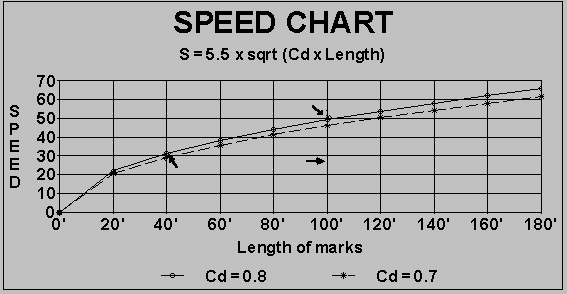What's in a Skid?

How to use the chart:
1. Determine the speed in mph after
the vehicle has stopped sliding. This might be zero, but generally
won't be zero. If the vehicle strikes something at the end of
the skid, it is still moving and this residual velocity must be
allowed for when using the chart.
2. Move out (horizontally ) on a
speed line until it hits one of the curves, the lower is for a
0.7 drag factor, the upper is for 0.8. This is the starting point
for finding the speed drop associated with a given length of skid
marks with a given residual speed after the mark ends.
3. Move out the length of the longest
single skid mark, then move up until you hit the curve again to
find the original speed.
EXAMPLES:
a. A vehicle leaves 40' of skid marks
before coming to rest- the original speed is about 30 mph for
both drag factors.
b. A vehicle leaves 60' of skid marks
before striking another vehicle, the damage and post impact slide
suggest that its speed was 30 mph when it struck the other vehicle.
1. Move out from the 30 mph line
until you hit the curve at about 40'.
2. Add the length of the skid mark
-60'- go out to the 100' mark and then up until you hit the curve
again at about 46-48 mph. This is the original speed of the vehicle.




